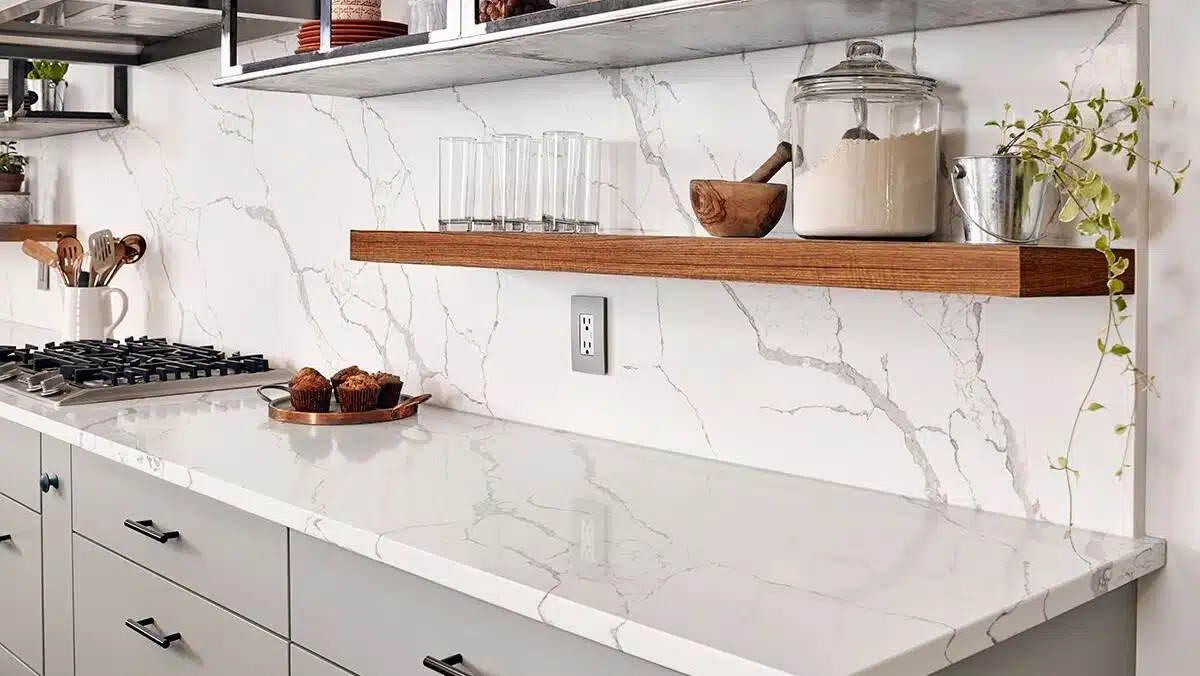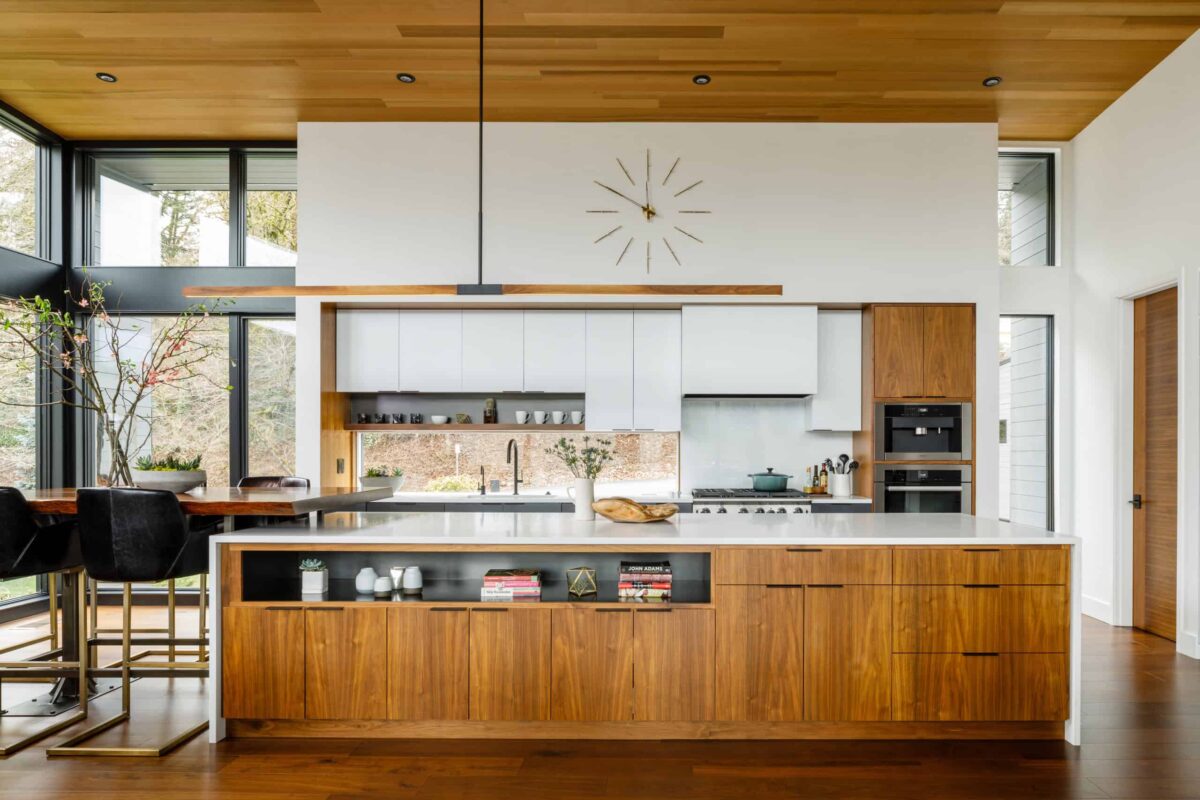Design & Trends, Kitchens in London
Eco-Friendly Kitchen Upgrades Inspired by London’s Green Initiatives
Aligning Your Renovation with the City’s Sustainability Goals
London, Ontario has long positioned itself as a leader in municipal sustainability, from its award-winning Green Bin program to ambitious targets for greenhouse gas reduction. As more homeowners seek to minimize their environmental footprint, the kitchen—often one of the most resource-intensive rooms—offers an ideal canvas for eco-conscious upgrades. In this article, we explore practical, style-forward, and locally inspired ways to create a greener kitchen, drawing directly from London’s green initiatives and rebate programs in 2025.
1. Energy-Efficient Appliances: Leverage Local Rebates and Incentives
Why It Matters
Kitchen appliances account for a significant portion of home energy use. By choosing ENERGY STAR®–rated models and taking advantage of local rebates, London homeowners reduce both their electricity bills and carbon footprint.
Key Upgrades
- Energy Star Refrigerators and Dishwashers
- Local Incentive: London Hydro offers rebates up to $250 for ENERGY STAR refrigerators, and Enbridge Gas provides up to $150 for high-efficiency dishwashers.
- Features to Look For: Inverter-driven compressors, advanced soil sensors, and low-decibel operation (42 dBA or less).
- Local Incentive: London Hydro offers rebates up to $250 for ENERGY STAR refrigerators, and Enbridge Gas provides up to $150 for high-efficiency dishwashers.
- Induction Cooktops
- Local Incentive: Save on energy costs—induction ranges can be up to 15% more efficient than standard electric coils. Through Enbridge Gas’s “Home Efficiency Rebate Plus” program, you may qualify for up to $200 off a qualifying induction cooktop.
- Benefits: Faster heat-up times, precise temperature control, and residual heat warnings—ideal for families in Byron or Masonville subdivisions seeking both safety and sustainability.
- Local Incentive: Save on energy costs—induction ranges can be up to 15% more efficient than standard electric coils. Through Enbridge Gas’s “Home Efficiency Rebate Plus” program, you may qualify for up to $200 off a qualifying induction cooktop.
- Smart Refrigerator and Freezer Features
- City Program Alignment: London’s “Smart Energy Savings” workshop series encourages connected appliances. Grant-eligible smart fridges can alert you to open doors or temperature fluctuations, preventing wasted food and energy spikes.
- Purchase Tip: When shopping in downtown London showrooms (e.g., Home Appliance Junction or Sears Home Service Centre on Wharncliffe Road), compare models with integrated Wi-Fi energy monitoring and staggered defrost cycles.
- City Program Alignment: London’s “Smart Energy Savings” workshop series encourages connected appliances. Grant-eligible smart fridges can alert you to open doors or temperature fluctuations, preventing wasted food and energy spikes.
🛠 Pro Tip: Bundle appliance purchases—some participating retailers in London offer “stacked rebates,” allowing you to combine a London Hydro rebate with a provincial Save on Energy bonus when you replace multiple old appliances at once.
2. Sustainable Cabinetry and Countertops: Embrace Local Materials and Certifications
Why It Matters
Traditional kitchen materials often rely on tropical hardwoods or high-VOC finishes. By selecting eco-friendly alternatives—especially those sourced or certified locally—you support London’s green-building ethos and improve indoor air quality.
Key Upgrades
- FSC-Certified or Reclaimed Hardwood Cabinets
- Local Source: Blackfriars Bridge Wood Recycling in London provides reclaimed oak and maple millwork salvaged from pre-1960s homes. Reclaimed cabinets carry an authentic patina and reduce demand for new forest harvests.
- Certification: If you choose new wood, verify that it’s FSC (Forest Stewardship Council) certified. London’s Greening Partnership program often features local cabinetmakers who adhere to these standards.
- Local Source: Blackfriars Bridge Wood Recycling in London provides reclaimed oak and maple millwork salvaged from pre-1960s homes. Reclaimed cabinets carry an authentic patina and reduce demand for new forest harvests.
- Low-VOC and Water-Based Finishes
- City Standards: The City of London’s “Healthy Buildings” bylaw encourages zero- and low-VOC paints and stains. Many showrooms in Byron and Wortley Village now stock products like Benjamin Moore Natura or Sherwin-Williams Harmony, both zero-VOC lines.
- Application: Opt for water-based clear coats on open shelving and cabinet interiors. This minimizes off-gassing and aligns with London’s indoor-air-quality targets.
- City Standards: The City of London’s “Healthy Buildings” bylaw encourages zero- and low-VOC paints and stains. Many showrooms in Byron and Wortley Village now stock products like Benjamin Moore Natura or Sherwin-Williams Harmony, both zero-VOC lines.
- Recycled Glass or Paper Composite Countertops
- Local Authorization: London’s Renewable Resources Centre often promotes Quarella Quartz or IceStone surfaces made with post-consumer glass. These slabs can contain up to 75% recycled glass, diverting waste from local landfills.
- Design Note: Complement light-reflective composite counters with a warm undercabinet LED profile to accentuate flecks of recycled materials—ideal for condos in the Warehouse District.
- Local Authorization: London’s Renewable Resources Centre often promotes Quarella Quartz or IceStone surfaces made with post-consumer glass. These slabs can contain up to 75% recycled glass, diverting waste from local landfills.
🛠 Pro Tip: When consulting with local cabinet fabricators (e.g., Kingsley Cabinets on Wellington Road or Stoney Creek Millworks), ask for a Life Cycle Assessment (LCA) summary. This document outlines environmental impact from sourcing to installation and aligns with London’s “Green Building Incentives” program.
3. Water Conservation Fixtures: Reduce Usage without Sacrificing Performance
Why It Matters
Ontario households use an average of 70–100 gallons of water daily in the kitchen alone. Upgrading to water-efficient fixtures helps London meet regional water-use reduction targets and lowers your utility bills.
Key Upgrades
- Touchless/Touch-Activated Faucets with Low-Flow Aerators
- Local Incentive: Enbridge Gas’s “Water Efficiency Rebate” occasionally extends to dual-purpose faucet upgrades paired with an ENERGY STAR dishwasher. Check their website for current offers.
- Features to Look For: Minimum flow rates of 1.5 GPM (6 LPM) or less, magnetic docking spray heads, and integrated filtration capabilities. Brands such as Moen MotionSense and Delta Touch are commonly available at Home Hardware on Fanshawe Park Road.
- Local Incentive: Enbridge Gas’s “Water Efficiency Rebate” occasionally extends to dual-purpose faucet upgrades paired with an ENERGY STAR dishwasher. Check their website for current offers.
- Dual-Function Pre-Rinse Sprayers
- City Guidance: London’s Water Conservation Plan recommends pre-rinse sprayers that reduce water consumption by up to 30%, especially for households that cook daily.
- Professional Installation: Have a licensed plumber from a local firm (e.g., R.E. Haines & Son or Darrell’s Plumbing) install a sprayer with flow restrictors—ensuring code compliance with London’s plumbing bylaw.
- City Guidance: London’s Water Conservation Plan recommends pre-rinse sprayers that reduce water consumption by up to 30%, especially for households that cook daily.
- Aerated Undermount or Farmhouse Sinks
- Material Choices: Stainless steel sinks with sound-dampening pads and integrated surface area for drying minimize the need for dishwashers. When paired with a low-flow aerator, you can achieve the same cleaning pressure using 40% less water.
- Local Rebate: Municipal rebate programs sometimes cover partial costs for changing from single-basin to double-basin sinks that facilitate water reuse (e.g., pre-soaking in one basin while rinsing in the other). Confirm eligibility before purchasing.
- Material Choices: Stainless steel sinks with sound-dampening pads and integrated surface area for drying minimize the need for dishwashers. When paired with a low-flow aerator, you can achieve the same cleaning pressure using 40% less water.
🛠 Pro Tip: Consider a hands-free, foot-pedal operated valve for sink sprayers—ideal in households with children or for home chefs practicing frequent prep. While a bit more expensive upfront ($600–$900 installed), it can cut water waste remarkably over a year.
4. Waste Management and Composting: Partnering with London’s Green Bin Program
Why It Matters
Food scraps and kitchen waste account for roughly 40% of household garbage. London’s award-winning Green Bin program diverts organic waste from landfills and transforms it into nutrient-rich compost. Integrating on-site composting systems and optimized recycling stations furthers this initiative.
Key Upgrades
- Built-In Pull-Out Compost Bins
- Local Program: Residents on London’s curbside Green Bin collection schedule can use any CSA- or BPI-approved compostable liners. Designing a pull-out cabinet with two compartments—one for recycling bins, one for compost—ensures seamless separation.
- Custom Cabinetry: London-based millwork companies often fabricate pull-outs that fit directly into standard 12″ or 15″ base cabinets. This makes composting second nature.
- Local Program: Residents on London’s curbside Green Bin collection schedule can use any CSA- or BPI-approved compostable liners. Designing a pull-out cabinet with two compartments—one for recycling bins, one for compost—ensures seamless separation.
- Countertop Compost Pails with Carbon Filters
- Recommended Models: The Epica Slim Eco-pail (1.9 L) and OXO Good Grips Compost Bin (3.5 L) are both available at London Farm Supply. Their replaceable charcoal filters control odors and keep kitchens fresh between Green Bin collection days.
- Placement: Position pails near prep zones but away from high-traffic areas to avoid spills. Tie in with a matte-black underlit floating shelf above to house biodegradable liners and guidebook for compostable material sorting.
- Recommended Models: The Epica Slim Eco-pail (1.9 L) and OXO Good Grips Compost Bin (3.5 L) are both available at London Farm Supply. Their replaceable charcoal filters control odors and keep kitchens fresh between Green Bin collection days.
- Recycling Station Integration
- Local Context: London’s Blue Box program collects paper/cardboard, plastics #1–#7, and metals. Incorporate three-way pull-out drawers: one for mixed recycling, one for compost, and one for residual waste.
- Design Strategy: Label each bin with UV-resistant decals referencing London’s recycling icons—reinforcing program guidelines and reducing contamination.
- Local Context: London’s Blue Box program collects paper/cardboard, plastics #1–#7, and metals. Incorporate three-way pull-out drawers: one for mixed recycling, one for compost, and one for residual waste.
🛠 Pro Tip: Install a small, wall-mounted board above your waste station that outlines acceptable Green Bin items (fruit peels, coffee grounds, soiled paper). This visual cue, echoing city-provided brochures, helps houseguests sort correctly and extends the life of each compost bag.
5. Sustainable Lighting and Insulation: Reduce Energy Demand Year-Round
Why It Matters
Lighting accounts for about 15–20% of a kitchen’s energy usage. London’s Community Energy Action Plan encourages LED upgrades and smart lighting controls, while improved insulation and weather-stripping reduce heating and cooling loads.
Key Upgrades
- Integrated LED Task and Ambient Fixtures
- Local Incentive: Save on bill credits through London Hydro’s “Commercial/Residential Lighting Retrofit” rebate (available for multi-unit dwellings, but individual homeowners can still report savings to DEEP Building Department for potential incentives).
- Fixture Choices: Under-cabinet LED strips (400–500 lumens per foot) with dimming capability; recessed 3″ LED cans (2700K–3000K) for warm, inviting ambient light.
- Smart Controls: Pair fixtures with Wi-Fi–enabled dimmer switches or motion sensors. London’s “Smart Living” workshops often demonstrate how these reduce standby power draw.
- Local Incentive: Save on bill credits through London Hydro’s “Commercial/Residential Lighting Retrofit” rebate (available for multi-unit dwellings, but individual homeowners can still report savings to DEEP Building Department for potential incentives).
- Window Insulation and Draught Sealing
- City Program: Home Energy Assessment grants through Enbridge Gas can subsidize up to 75% of the cost for professional insulation and window sealing. Completed assessments provide a detailed report—use it to install weather stripping around any kitchen door or window leading to balconies (common in Richmond Row high-rises).
- Applications: Replace single-pane glass above the sink with low-E insulated models through local glass shops like Peterborough Glass or Country Wide Windows & Doors London. Seal gaps in kitchen cabinetry where appliances meet walls to prevent heat transfer from poorly insulated exterior walls.
- City Program: Home Energy Assessment grants through Enbridge Gas can subsidize up to 75% of the cost for professional insulation and window sealing. Completed assessments provide a detailed report—use it to install weather stripping around any kitchen door or window leading to balconies (common in Richmond Row high-rises).
- Reflective or Light-Enhancing Surfaces
- Design Tip: Use a light-reflective backsplash—such as a glossy recycled glass mosaic—to bounce natural daylight deeper into the kitchen. In smaller condos east of the Thames, this tactic amplifies limited sun exposure.
- Flooring Consideration: Install cork or bamboo flooring (both rapidly renewable) paired with low-VOC finish. These materials have insulating properties, keeping the kitchen warmer in winter and cooler in summer.
- Design Tip: Use a light-reflective backsplash—such as a glossy recycled glass mosaic—to bounce natural daylight deeper into the kitchen. In smaller condos east of the Thames, this tactic amplifies limited sun exposure.
🛠 Pro Tip: Before purchasing insulation or LED fixtures, ask for “ENERGUIDE” energy assessment credits. These credits reduce upfront costs and align with the City’s greenhouse gas reduction targets for 2025 and beyond.
6. Water Filtration and Conservation: Beyond Basic Upgrades
Why It Matters
Water usage and quality are dual concerns. London’s Safe Water Office promotes both conservation and reducing plastic waste. Incorporating water filtration systems and greywater reuse enhances sustainability.
Key Upgrades
- Under-Sink Reverse Osmosis Filtration
- Local Certification: Work with a Canadian-certified installer like London Water Softening or AquaPro Water Systems. Ensure the system is NSF/ANSI 58 standard–certified to reduce lead, chlorine, and sediment.
- Environmental Impact: Using filtered tap water for drinking and cooking cuts reliance on bottled water—London intercepts approximately 12 million plastic bottles annually through Blue Bin recycling.
- Local Certification: Work with a Canadian-certified installer like London Water Softening or AquaPro Water Systems. Ensure the system is NSF/ANSI 58 standard–certified to reduce lead, chlorine, and sediment.
- Greywater Collection for Non-Potable Uses
- City Guidelines: While residential greywater reuse for toilet flushing is not currently permitted in London, you can collect lightly soapy dishwater for outdoor garden irrigation of edible landscaping—aligned with London’s urban agriculture policies if you have a backyard garden or community allotment.
- System Tip: Install a simple diverter valve under the sink that channels cold rinse water into a 20 L lidded reservoir. Use this stored water to irrigate potted herbs or produce on a balcony.
- City Guidelines: While residential greywater reuse for toilet flushing is not currently permitted in London, you can collect lightly soapy dishwater for outdoor garden irrigation of edible landscaping—aligned with London’s urban agriculture policies if you have a backyard garden or community allotment.
- WaterSense–Certified Dishwashers
- Local Incentive: Enbridge Gas occasionally partners with London Hydro to offer bonus rebates on dishwashers that meet both ENERGY STAR and WaterSense criteria—usually cutting water usage by 15–20% compared to older models.
- Selection Advice: Look for models with soil sensors and eco-wash cycles. These cycles adjust water volume and temperature, reducing both water and gas or electricity consumption.
- Local Incentive: Enbridge Gas occasionally partners with London Hydro to offer bonus rebates on dishwashers that meet both ENERGY STAR and WaterSense criteria—usually cutting water usage by 15–20% compared to older models.
🛠 Pro Tip: Position your fridge away from direct sunlight and heat sources (oven, stove). Keeping fridge coils and vents dust-free improves compressor efficiency and reduces water consumption in built-in ice makers.
7. Final Considerations: Aligning Design with London’s Sustainability Vision
- Engage a Certified Green Professional (CGP)
- London’s “Green Building Rooms” directory lists CGPs who can review your kitchen plans for efficiency, material sourcing, and program eligibility. Their expertise ensures you meet or exceed London’s “Green Home Standards.”
- London’s “Green Building Rooms” directory lists CGPs who can review your kitchen plans for efficiency, material sourcing, and program eligibility. Their expertise ensures you meet or exceed London’s “Green Home Standards.”
- Document Your Upgrades for Rebate Claims
- Save all purchase receipts, model numbers, and Energy Star/WaterSense labels. Contact London Hydro and Enbridge Gas to confirm submission deadlines—often within 90 days of purchase.
- Save all purchase receipts, model numbers, and Energy Star/WaterSense labels. Contact London Hydro and Enbridge Gas to confirm submission deadlines—often within 90 days of purchase.
- Plan for Lifecycle Durability
- Select materials that are built to last (e.g., solid-surface counters, stainless steel sinks, engineered bamboo floors). London’s “Home Retrofit Financing” department sometimes offers low-interest loans for upgrades with guaranteed multi-year energy savings.
- Select materials that are built to last (e.g., solid-surface counters, stainless steel sinks, engineered bamboo floors). London’s “Home Retrofit Financing” department sometimes offers low-interest loans for upgrades with guaranteed multi-year energy savings.
- Educate Your Household on Sustainable Practices
- Beyond physical upgrades, incorporate green habits: run dishwashers only when full, use cold water for rinsing, and compost responsibly via the Green Bin. London’s www.London.ca website provides a printable kitchen-use guide to share with family members or tenants.
- Beyond physical upgrades, incorporate green habits: run dishwashers only when full, use cold water for rinsing, and compost responsibly via the Green Bin. London’s www.London.ca website provides a printable kitchen-use guide to share with family members or tenants.
- Support Local Eco-Businesses
- Whenever possible, purchase locally manufactured cabinetry, reclaimed wood, or Ontario-made appliances. This reduces transportation emissions and supports London’s green economy—a pillar of the city’s Community Energy Action Plan.
- Whenever possible, purchase locally manufactured cabinetry, reclaimed wood, or Ontario-made appliances. This reduces transportation emissions and supports London’s green economy—a pillar of the city’s Community Energy Action Plan.
Final Thoughts: A Kitchen for Today and Tomorrow
Incorporating eco-friendly upgrades in your London ON kitchen does more than reduce utility bills—it aligns your home with the city’s broader sustainability goals for 2025 and beyond. By selecting energy- and water-efficient appliances, sustainable materials, and effective waste-management systems, you create a functional, stylish space that honors London’s green initiatives. Your kitchen becomes not just a culinary workspace but a living testament to conscious design—ensuring cleaner air, reduced landfill waste, and lower greenhouse gas emissions across the London community.





